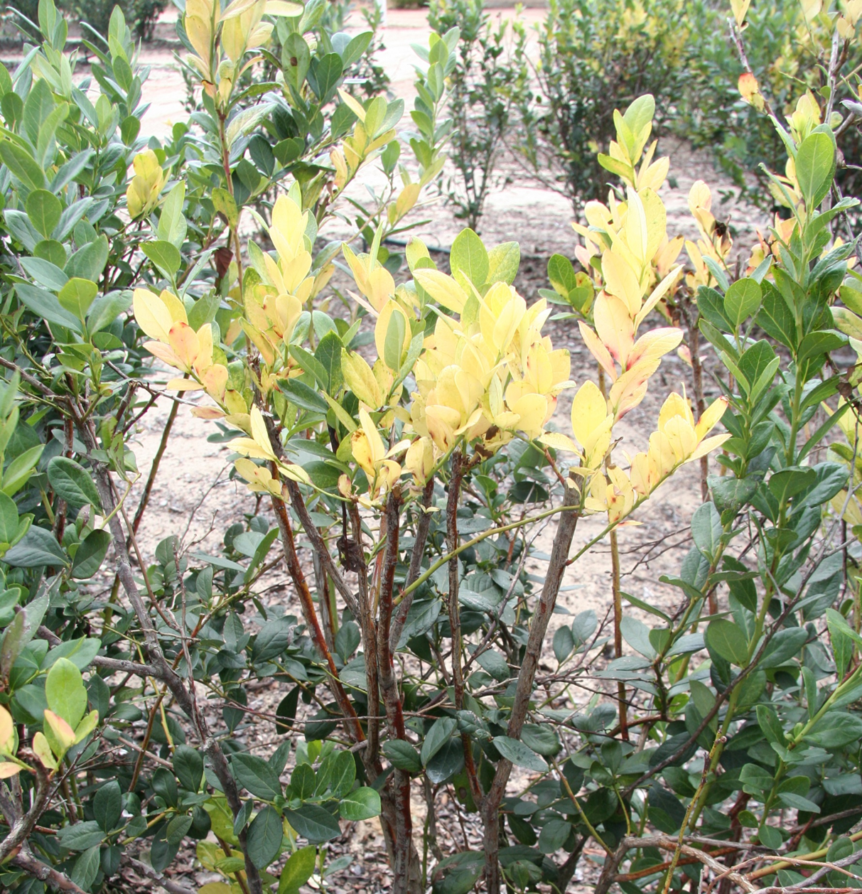
By Clint Thompson
A fungal pathogen that was isolated to South Florida blueberries not too long ago is now on the radar of growers in North Florida and South Georgia.

Phil Harmon, professor and Extension plant pathologist at the University of Florida, cautions farmers about algal stem blotch and believes it is a serious threat if not managed properly.
“It’s a pathogen that’s been on our radar the last 15 years. It’s a known pathogen of tropical crops. This is related to the orange felt disease of blackberry and bramble. It’s now moving from extreme south Florida where we’ve grown blueberries up into central Florida in the last 10 years and now north-central Florida in the last five; southern Georgia within the last three,” said Harmon, who added that many growers mis-stake its symptoms for nutrient deficiencies or a chemical burn when they first see it.
“The blueberries when they’re infected with algal stem blotch pathogen turn bright white on the growing tips of young leaves and stems. They look similar to a herbicide injury that can bleach plants white. This algal pathogen does the same thing. When it infects stems, it secretes some sort of toxin into the vascular of the plant, which moves up to the growing tips.”
Minor At This Point
Harmon stressed that the disease is minor at this point, because growers have varieties that have displayed resistance. However, there are varieties that are vulnerable to infection.
“It can become quite severe, and it is a primary concern for growers growing those varieties. But they have some good tools to manage it as far as chemical prevention,” Harmon said. “Now that the word is out and folks here in Florida know what it is and what I looks like, they can recognize it early. That’s key to preventing it from getting bad.”
Producers should use copper-based fungicides to manage the disease. They have proven to be effective.
“It’s a slow and steady battle against this thing. The first step is to recognize that you have it and you’re growing a susceptible variety. The second is to get the copper applications out before it becomes severe,” Harmon said. “We’ve had good success with several different formulations of copper. We’ve got a lot of options in copper that seem to work pretty well if it’s applied in that summer timeframe and if it’s repeatedly applied during the time this thing is active.”










